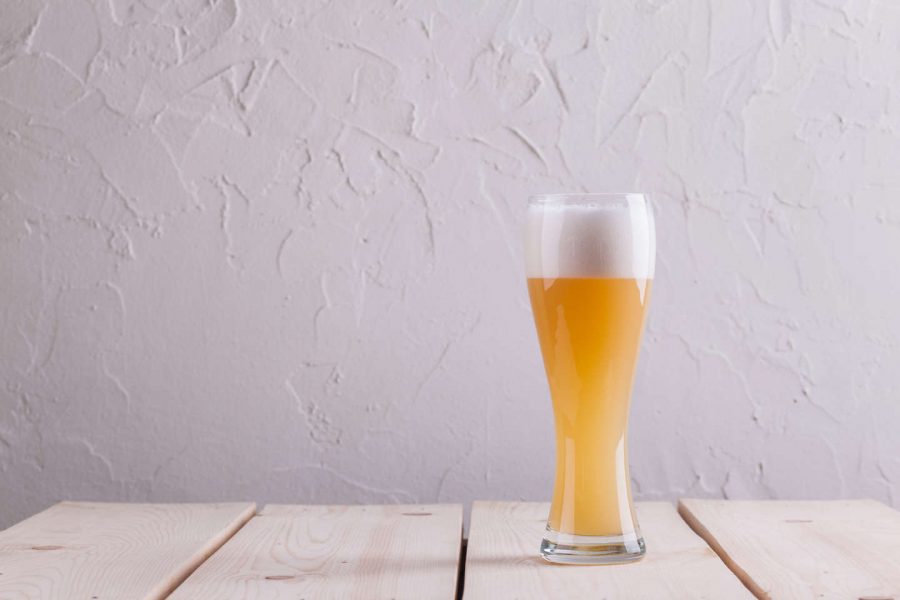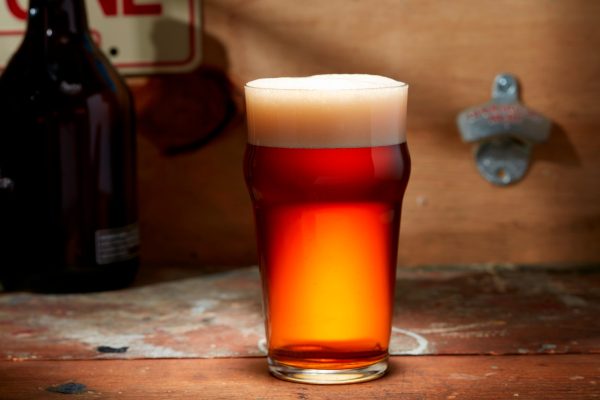
The following beer recipe is featured in the May/June 2015 issue of Zymurgy magazine. Access this issue along with the archives with Zymurgy Online!
Soured Fruit Beer (28C) is a new category in the 2015 BJCP Style Guidelines, however, this style of brewing is anything but new. Some of the first brew concocted thousands of years ago included local and seasonal fruits and most certainly were sour to some degree. Despite its ancient origins, this style is seeing a renewed birth at the hands of creative brewers around the world.
According to the 2015 guidelines, soured fruit beer can be made from any number of base beer styles and any fruit imaginable, but a couple of key characteristics must be present. First, microbes other than Saccharomyces must be used to contribute a defining “funk” or acidity. Another key attribute is that the flavors and aromas of fruit must be identifiable and must complement the base beer flavor.
Kevin Wright, director of brewing at Hanger 24 in Redlands, California, shares this Sour Blonde with Apricot recipe found in 2015 May/June Zymurgy. Fresh apricots bring the taste of summer to this bright, sour ale. Remember it’s important to plan your brewing and aging correctly to be able to add the fresh apricots at the peak of harvest. Depending on how long your souring process takes, you may need to brew the base beer a year ahead of time. However, your patience will be rewarded!
The following beer recipe is featured in the May/June 2015 issue of Zymurgy magazine. Access this issue along with the archives with Zymurgy Online!
Soured Fruit Beer (28C) is a new category in the 2015 BJCP Style Guidelines, however, this style of brewing is anything but new. Some of the first brew concocted thousands of years ago included local and seasonal fruits and most certainly were sour to some degree. Despite its ancient origins, this style is seeing a renewed birth at the hands of creative brewers around the world.
According to the 2015 guidelines, soured fruit beer can be made from any number of base beer styles and any fruit imaginable, but a couple of key characteristics must be present. First, microbes other than Saccharomyces must be used to contribute a defining “funk” or acidity. Another key attribute is that the flavors and aromas of fruit must be identifiable and must complement the base beer flavor.
Kevin Wright, director of brewing at Hanger 24 in Redlands, California, shares this Sour Blonde with Apricot recipe found in 2015 May/June Zymurgy. Fresh apricots bring the taste of summer to this bright, sour ale. Remember it’s important to plan your brewing and aging correctly to be able to add the fresh apricots at the peak of harvest. Depending on how long your souring process takes, you may need to brew the base beer a year ahead of time. However, your patience will be rewarded!
Ingredients:
- 5.11 lb (2.32 kg) domestic pale two-row malt
- 2.25 lb (1.02 kg) unmalted flaked wheat (20%)
- 2.25 lb (1.02 kg) white wheat malt (20%)
- 1.75 lb (0.79 kg) Vienna malt (15%)
- 0.25 oz (7 g) Saaz pellets, 4% a.a. (60 min)
- Ale or lager yeast of your choice for primary fermentation
- Brettanomyces, Lactobacillus, and Pediococcus blend such as WLP655 or Wyeast 3763 for secondary fermentation
- 8.25 lb (3.74 kg) fresh, ripe, pitted apricotrs (see Directions)
- Water: Target ion levels under 100 ppm each. Target mash pH 5.2-5.6
Specifications:
Yield: 5.5 Gallons (20.82 L)
Original Gravity: 1.055
Final Gravity: 1.004
ABV: 6.60%
IBU: 3
SRM: 4
Directions:
To brew this sour blonde with apricot, mash at high temp for a short amount of time: 160°F (71°C) for 15 minutes. The idea is to create a wort with low fermentability and even some starch remaining. Boil 60 minutes. Ferment with primary strain at 68°F (20°C) for ale or 62°F (17°C) for lager. After primary fermentation is complete, rack to your aging vessel of choice (shoot for as low oxygen permeability as possible to limit acetic acid) and add Brett/bacteria blend. Once souring has reached our satisfaction (8-12 months typically), add the apricots. Select a variety with intense flavor (Blenheim, Golden Sweet, etc.). You can choose to throw a few pits in for character. After 2-3 months, rack off apricot sludge and package.
Extract Option
Omit Vienna and wheat malts. Reduce pale malt and flaked wheat to 2 lb (0.9 kg) each. Mash these together at 160°F (71°C) for 15 minutes. Drain, rinse and dissolve 3.5 lb (1.59 kg) extra pale malt extract sytup and 2 lb (0.9 kg) wheat malt extract syrup into the resulting wort. Follow directions above.





Share Post